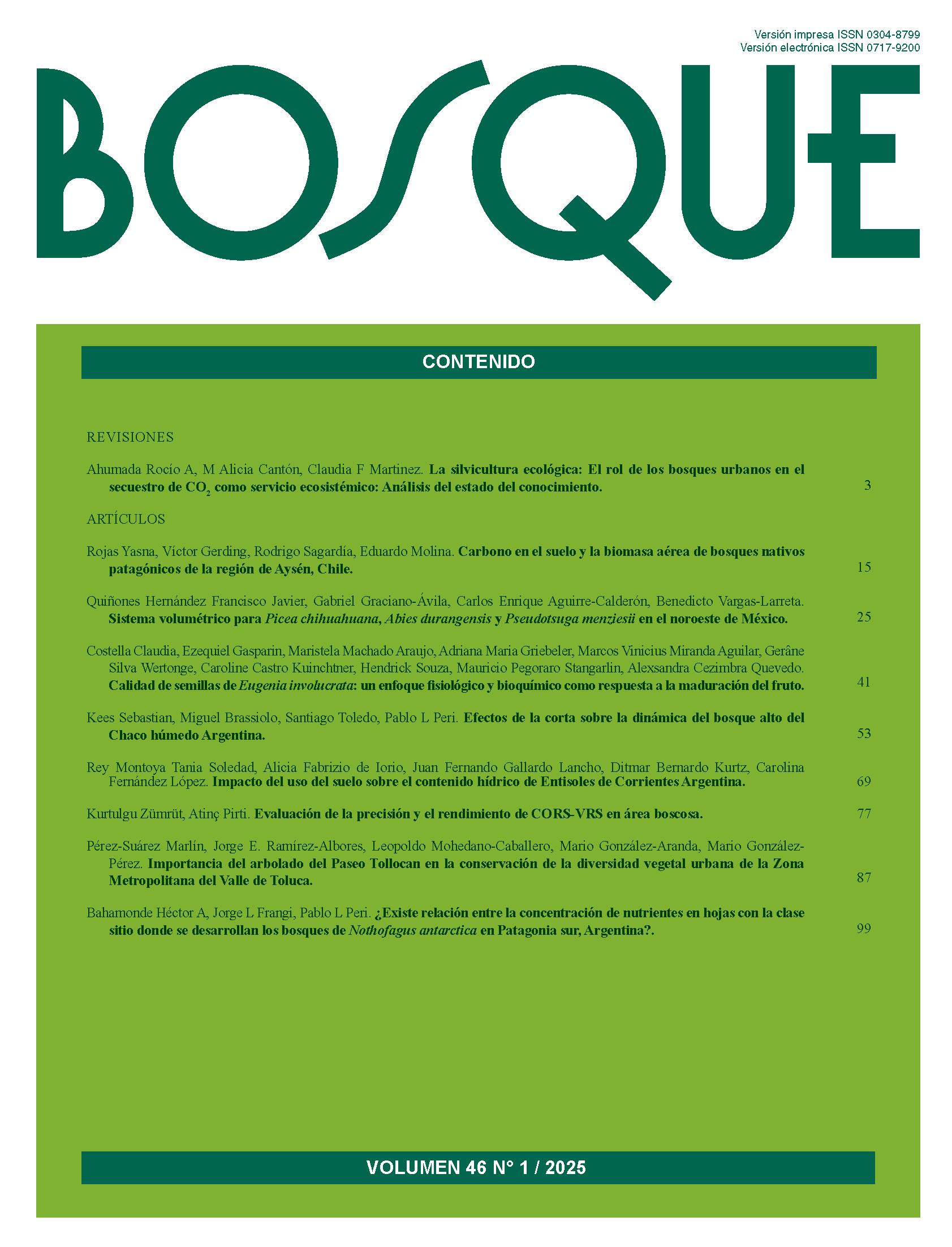Is there a relationship between the concentration of nutrients in leaves and the class of site where Nothofagus antarctica forests growth in southern Patagonia, Argentina?
Main Article Content
Abstract
The objective of this study was to determine whether differences in site quality correlate with better leaf nutritional status in pure Nothofagus antarctica (ñire) forests. Nine pure ñire stands of the three site classes (SC) were selected to represent the most representative sites (97 % of the total area of these forests) of the southern Patagonia region. At each study site, fully expanded leaves (mature and green) were collected from five dominant trees in each stand. These leaves were washed and subsequently oven dried, weighed, and ground prior to macro (C, Ca, K, Mg, N, P, and S) and micro element (Al, Fe, Mn, and Na) determination. Additionally, three composite samples (from five subsamples) of the first 20 cm of soil were collected from each site and processed for macro- and micro-element determination. Macro-nutrient concentrations in leaves varied between site classes (SC) in some elements such as K, Mg, N, P, and S, with a trend to be lower in the worse SC. In the case of soil macronutrients, all the evaluated elements showed the lowest values in the SC 5 stands. Thus, soil and leaf concentrations were significantly and positively correlated with N, P, and S. Conversely, Al, Fe, and Mn concentrations in leaves were lower in the best site class stand. With this information, we can suggest that the best classes of forests in southern Patagonia were positively associated with higher values of some macronutrients and negatively associated with some microelements.


 https://orcid.org/0000-0003-3065-9749
https://orcid.org/0000-0003-3065-9749